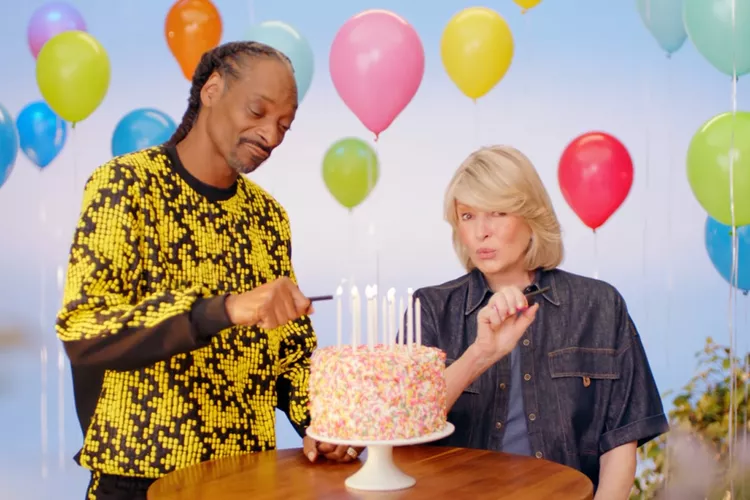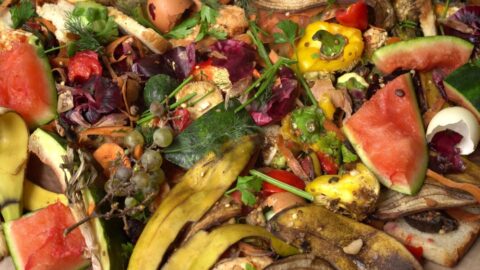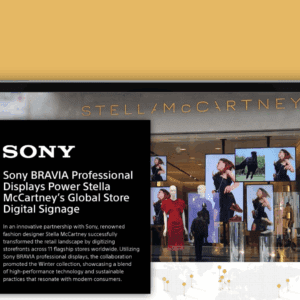In 1982, Martha Stewart made her entrance onto the mass-market stage with the publication of her book, Entertaining. She has since gone on to write 99 more, not to mention becoming the first female self-made billionaire in American history when she took Martha Stewart Living Omnimedia (MSLO) public in 1999.
Widely considered to be the “original influencer,” Stewart has skillfully used her good looks, personal stories, and skill to build a massive following, well before social media made that a common feat. In fact, her life (excepting the prison stay, of course) is the dream of all entrepreneurs — to start a business based on your passions that continues to grow and evolve with you through the years.

That business is now the subject of a Netflix documentary, and what is clear as one watches is that Stewart’s core skill (beyond even her green thumb and approachability) is her adaptability, something she continues to excel at even at 83 years old. Her brand has traversed the retail and media landscape — from Kmart to Amazon, from NBC to TikTok and most recently as host of an Amazon livestream this Black Friday.
A master of reinvention, Stewart’s five decades of continuous cultural relevance — which range from ’80s tablescapes to an unlikely yet somehow perfect partnership with Snoop Dogg — have helped her develop an arsenal of tips relevant to any influencer, indeed any entrepreneur, today.
Lucky for us, she took the stage at the recent Amazon Accelerate conference to share some of what she’s learned, as well as some fun anecdotes from her decades in the trenches of entrepreneurship (like the fact that she knew Jeff Bezos back when he had hair). Here are some of her top tips:
1. No Matter the Platform, Tell a Story
From the outset Stewart understood the need for good storytelling. Her first book, Entertaining, was a runaway hit because it wasn’t just another cookbook (which, by the way, was what her publishers wanted).

“It was really three books in one,” recounted Stewart. “My publisher wanted it to be an ordinary cookbook with just recipes and maybe a few pictures; that was what cookbooks were in 1982. I wanted it to be highly illustrated and tell a story as well as give the best possible recipes. It became a landmark book.”
And everything that the Martha Stewart brand has become extends from that first success: “Content remains king to me,” she said. “It is the most important thing that I have created, the educational content that is so useful to millions and millions of people, and that also flows into the product, because the product came out of that content.”
Stewart’s 100th book was published earlier this month and features 100 of her favorite recipes, each with a backstory.
2. Always be Looking Ahead
After the success of her first book, “I realized that I could write a book a year, and that would be very productive,” said Stewart. Of course, that’s not what she did, or at least that’s not all she did. Given the volume of ideas she had, she launched a magazine — another pioneering take on an old model that blended advice and how-to content with lifestyle inspiration. That magazine led to TV and products (because not everyone wants to make things themselves), which eventually led to the pioneering idea of an “omnimedia” company.
“It was a solar system with content at the center,” Stewart explained. “Content was always the most important thing to me, and with that we then radiated out into media, then we radiated out into omni-merchandising. And then, of course omni-net; the internet became extremely important.”
3. Curiosity and Passion are Necessities
For budding entrepreneurs, Stewart said her biggest piece of advice is: “If you’re not passionate about this idea that you’ve come up with, forget it.”
Beyond that, she advised everyone to approach their days with curiosity: “It is very interesting to organize one’s day around curiosity,” she said. “I develop my products that way. Every day I think of another product that could be useful and that we could sell.”
4. Focus on ‘Needs and Wants’
When it comes to developing your product, even if that product is content, Stewart said she always focuses on “those words — ‘need’ and ‘want.’ If you need it and you want it, it’s probably a very good product. That’s why the magazine Martha Stewart Living was so successful for 40 years, before the internet came along and killed most magazines.”
Long before the internet disruptors arrived and reinvented everything from taxi rides to T-shirts, Stewart was already focusing on “trying to fill a void. Something that doesn’t exist, something people need and want and don’t have,” she says in the Netflix series. That ethos is still incredibly powerful today and, thanks to the reach and access offered by the internet, has propelled any number of new brands in recent years. The only difference is that Stewart was thinking this way decades ago, which is why she’s, well, Martha Stewart.
Even once you hit it big with consumers, Stewart said that “the customer is all-important — your authenticity, your reliability, the functionality of the product, the beauty of the product, the usefulness of that product, is so important. I try to look at every product like that.”
5. Don’t be Afraid to Pivot, but Keep the Good Pieces of the Pie
Even media maven Martha Stewart has had her failures. Her advice in that regard: “If one of your products just isn’t selling, rethink it. I use the analogy of, take that whole pie and cut it into little pieces and find the pieces that actually work, because if it was a good idea and you really believe in it, part of that idea probably still works very nicely.”
6. You Have to Spend Money (on Ads) to Make Money
At the beginning of her business life Stewart was all about word of mouth. In fact, she said she didn’t spend a dime on advertising until she started working on her line with Kmart in 1997. But Kmart spent $20 million advertising the collection in the first year alone, and Stewart said she was stunned to realize that “every single dollar was totally worth it, because we reached $1.6 billion in sales within three years.
“It was the advertising, which I had never done before, but when I saw how effective really good advertising could be, I started to believe in it,” she added. “Advertising does play a big part in the success of a product, [especially] since the landscape has changed so much. And social media of course now plays a tremendous part in making a product likable, useful and desirable.”













